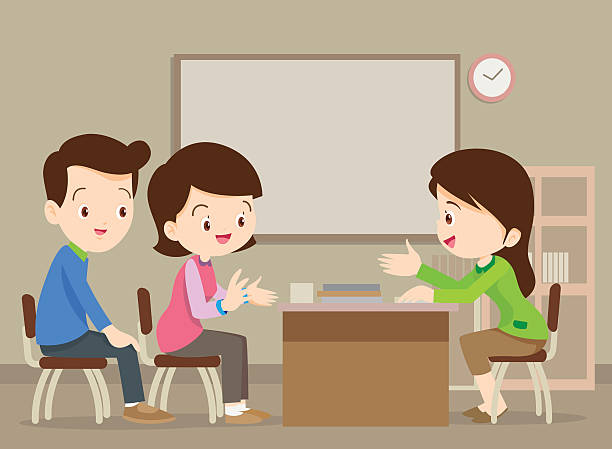What Is Discipline and Why Is It Important?
The Definition of Discipline
Discipline is a way of teaching children about acceptable behavior and boundaries. It’s about guiding them, offering support, and giving them tools to make the right decisions. Discipline helps children understand the difference between right and wrong, what’s expected of them, and how their actions impact themselves and others.
The Role of Discipline in Child Development
Effective discipline strategies plays a huge role in the healthy development of a child. It helps to build important life skills like problem-solving, emotional regulation, and empathy. By providing clear boundaries and guidance, discipline helps children learn self-control, which can lead to better decision-making as they grow older.
Key Principles of Effective Discipline
Consistency is Key
One of the most important principles of discipline is consistency. Children thrive when they know what to expect. If rules and consequences are inconsistent, children can become confused and may push boundaries to test limits. Keeping expectations clear and uniform helps children understand the structure and reduces behavioral issues.
Understanding the Child’s Needs
Each child is unique, and their emotional and developmental needs vary. It’s important to adjust your discipline approach based on your child’s temperament, age, and emotional state. What works for one child may not work for another, so understanding your child’s needs is crucial in applying the right strategy.
Positive Reinforcement
Rewarding positive behavior is an effective way to encourage it. Praise, rewards, or privileges can motivate children to continue making good choices. Positive reinforcement also builds the child’s self-esteem, showing them that they are capable of doing the right thing. Whether it’s a simple “good job” or earning extra screen time, positive reinforcement goes a long way.
Setting Clear Expectations and Boundaries
Clear expectations and boundaries give children a roadmap for behavior. Let them know the rules and explain why they exist. When children understand the reasons behind the rules, they are more likely to follow them. Be firm but fair when reinforcing boundaries, and ensure that consequences are related to the behavior.
Popular Discipline Strategies
Positive Reinforcement and Rewards
As mentioned, reinforcing positive behavior is one of the most powerful strategies for shaping behavior. Rewards don’t always have to be tangible; verbal praise, extra playtime, or a fun outing can work wonders in encouraging good behavior. Consistently reinforcing good actions creates a cycle of positive behavior.
Time-Outs and Breaks
Time-outs are often used to help children calm down and reflect on their behavior. They provide the child with a brief, non-punitive break from a situation, allowing them to regain control of their emotions. A well-timed time-out can be effective in preventing escalation and promoting self-regulation.
Natural and Logical Consequences
Natural consequences occur when children experience the result of their actions (e.g., not bringing a coat to school leads to being cold). Logical consequences are those that are directly related to the behavior (e.g., if a child refuses to do their homework, they lose screen time). Both types of consequences teach responsibility and accountability.
Redirection and Distraction Techniques
For younger children, redirection and distraction can be parentings.co to manage behavior. Instead of focusing on a negative action, redirect their attention to something positive or engaging. For example, if a child is throwing toys, suggest they play a game or read a book instead.
The Power of Role Modeling
Children learn a lot by watching their parents and caregivers. If you model good behavior—like showing respect, patience, and kindness—children are more likely to imitate it. Be mindful of how you handle conflict, stress, and disappointment, as children often mirror adult reactions.
Dealing with Common Behavioral Issues
Managing Aggressive Behavior
Aggressive behavior, like hitting or shouting, often stems from frustration or a lack of coping skills. Encourage calmness by teaching your child alternative ways to express emotions, such as using words to explain their feelings. When they do respond calmly, praise them for using appropriate behavior.
Handling Tantrums and Meltdowns
Tantrums are common in younger children, but they can also occur in older children. During a meltdown, stay calm and avoid yelling or becoming frustrated. Validate their feelings and provide comfort without giving in to the tantrum. Over time, teach them more effective ways to cope with their emotions.
Dealing with Defiance and Disrespect
Defiance and disrespect often arise as children push boundaries and test authority. Instead of engaging in power struggles, calmly reinforce the rules and consequences. Show empathy while remaining firm. Encourage respectful communication and allow the child to express their feelings within the boundaries of respect.
Addressing Lying and Dishonesty
Lying can be a tough behavior to address. First, try to understand why the child lied—whether it’s out of fear of punishment, wanting to please someone, or avoiding responsibility. Reinforce the importance of honesty and create an environment where the child feels safe telling the truth without judgment.
The Impact of Parental Emotions on Discipline
Staying Calm During Challenging Moments
When disciplining a child, your emotional state plays a crucial role. If you’re upset or angry, your discipline may come across as punitive rather than educational. It’s important to stay calm and focused, modeling emotional regulation for your child. Take a few deep breaths if needed to ensure your response is measured and thoughtful.
Avoiding Emotional Reactivity and Overreaction
Emotional reactivity—like yelling or giving in out of frustration—can undermine the effectiveness of discipline. Reacting impulsively can escalate the situation and may teach children that they can control you through their behavior. Instead, take a step back, assess the situation, and respond with patience and understanding.
How to Adapt Discipline Strategies to Different Ages
Discipline Strategies for Toddlers (1-3 Years Old)
At this age, children are learning to express themselves, and their emotional regulation is still developing. Strategies like redirection, clear boundaries, and short time-outs are effective. Praise good behavior and use simple, clear language to explain rules.
Discipline Strategies for Preschoolers (3-5 Years Old)
Preschoolers begin to understand cause and effect, so logical consequences and consistent routines work well. Time-outs and reward systems can help reinforce good behavior, and it’s essential to model calmness and empathy when addressing challenging behaviors.
Discipline Strategies for School-Aged Children (6-12 Years Old)
As children grow, they can handle more responsibility. This is the time to introduce more complex consequences, like earning privileges through positive behavior. Open communication and collaborative problem-solving become more important as children gain more independence.
Discipline Strategies for Teenagers (13-18 Years Old)
Teenagers benefit from clear boundaries and respectful communication. At this stage, it’s important to involve them in discussions about expectations and consequences. Use natural consequences and logical reasoning to help them understand the impact of their choices on their own lives and the lives of others.
The Importance of Communication in Discipline
Talking to Children About Behavior and Expectations
It’s important to have ongoing conversations with children about why certain behaviors are expected and what the consequences are. Explaining the reasons behind your rules can help children internalize values and make better decisions on their own.
Encouraging Open Communication and Problem-Solving
Open communication helps children feel heard and respected. Encourage them to share their thoughts and feelings, and involve them in problem-solving when conflicts arise. This helps foster emotional intelligence and equips children with tools for managing conflict in a healthy way.
Common Discipline Mistakes to Avoid
Being Inconsistent with Rules
Inconsistency in discipline leads to confusion and lack of respect for boundaries. Be sure to follow through with consequences and keep expectations clear.
Using Punishment Rather Than Guidance
Punishment is often reactive and doesn’t teach children how to change their behavior. Instead, focus on teaching and guiding children to understand their mistakes and make better choices.
Ignoring the Importance of Praise and Encouragement
Too often, we focus on correcting bad behavior but forget to acknowledge and praise good behavior. Regularly reinforcing positive actions helps children feel motivated to continue doing well.
Conclusion: Building a Positive and Respectful Relationship through Discipline
Discipline is a powerful tool for guiding children toward positive behavior and helping them develop the emotional and social skills they need to thrive. When approached with consistency, empathy, and respect, discipline can strengthen your relationship with your child and promote long-term success.

:max_bytes(150000):strip_icc()/discipline-strategies-for-tweens-4115350-1529d99ab8ac4c4481e62934f83457d7.png)


